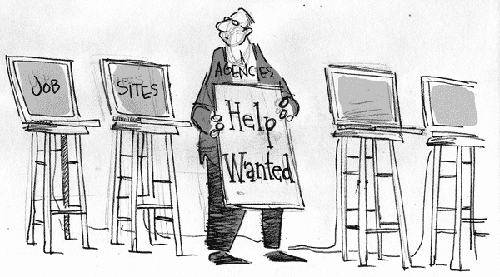Work in Progress: Comments (0)
Lately I have been perusing the various FCW blogs and have noticed one constant: With only a couple notable exceptions, every blog entry has the following:
Comments (0)
As a taxpayer (and spouse of a federal employee) this is good news.
Our federal employees are so busy doing the work of the people that they don't have the time or interest to fire off numerous trivial missives in reply to obscure Web site outposts.
As the content provider for one such outpost, however, I am concerned. How am I to know if I am writing something that people want to see or know about and, if not, how do I rectify this? And, if I don't figure this out soon, what is the going rate for middle-aged grocery baggers?
How does one make a blog interesting? In the course of doing some very unscientific research that involved asking friends and acquaintances (and a couple 11-year-olds) what they thought worked, or didn't, in blogs they read, I made a couple discoveries. As a general rule, they found that blogs that didn't work for them involved a certain amount of, for lack of a better term, navel gazing -- the blogger was describing the minutiae of their personal existence in an uninformative or unentertaining way.
In looking at the blogs that "worked" for my survey, I/we noticed a couple constants:
- Unusual imagery
- Entertaining links
- Libel
These items probably say more about me and my community than the actual state of blogging, and there are many dull and ungraphic sites out there that serve their communities well. But in considering these items to make my blog more attractive, I at least have to give them a try.
Imagery. This is actually my original purpose for being involved here. But, in addition to my drawings, I can always throw in a nonsequitur photo or two. In the true Web 2.0 spirit, I should probably start a caption contest.

Entertaining links. These are always fun and, I'm ashamed to admit, take up more than a little time in my Web experience. Here's one for a game: You click on the red square to activate it, and see how long you can keep from being touched by the moving blue squares. I was told that this game is used in fighter pilot training but, as you well know, you can say anything on the net.
Libel. This is easy enough. I can go national: Senator McCain was seen wearing mismatched socks last week (which, coincidentally, the New York Times was planning to run above the fold tomorrow). Or I can go local: Former FCW reporter John Zyskowski had changed the first letter of his surname from an 'S' to a 'Z' so that he would always be the last name on the masthead.
Interestingly enough, this week's cartoon and editorial subject address the ongoing discussion on how to best use Web 2.0 technologies -- blogs, social networks, wikis, etc. -- in the federal community. Of special concern is how agencies can use these technologies to their advantage. The discussion has progressed from whether business and government should use technologies to how they can best use them.
I find it interesting that this is, at the heart of it all, a discussion on how best to communicate. This is not a new discussion, but a changed discussion due to the wide variety of new technologies that pop up each day. What is confusing for many folks is that the new technologies for communicating come with new rules for how to communicate. I still find myself doing a double take when I hear an account of someone texting during a meeting/activity that would seem to require their full attention. These are multi- tasking skills that I never developed.
A couple angles were discussed with Chris D., FCW Editor-in-chief and Insider blogger. One was that agencies, by ignoring the Web 2.0 technologies, risk having an even harder time attracting and recruiting talent: If younger talent relies on these technologies, how will agencies that don't use them communicate with these people? Here is an idea I had for dealing with this issue:

An angle that appealed to me was the natural tendency of government (and business) to be more conservative with newer technologies. I specifically thought of personalities involved in this discussion, which resulted in the cartoon shown below.
If that doesn't work, I can always attach more photos.

NEXT STORY: Pentagon: Cyberattacks appear to come from China





